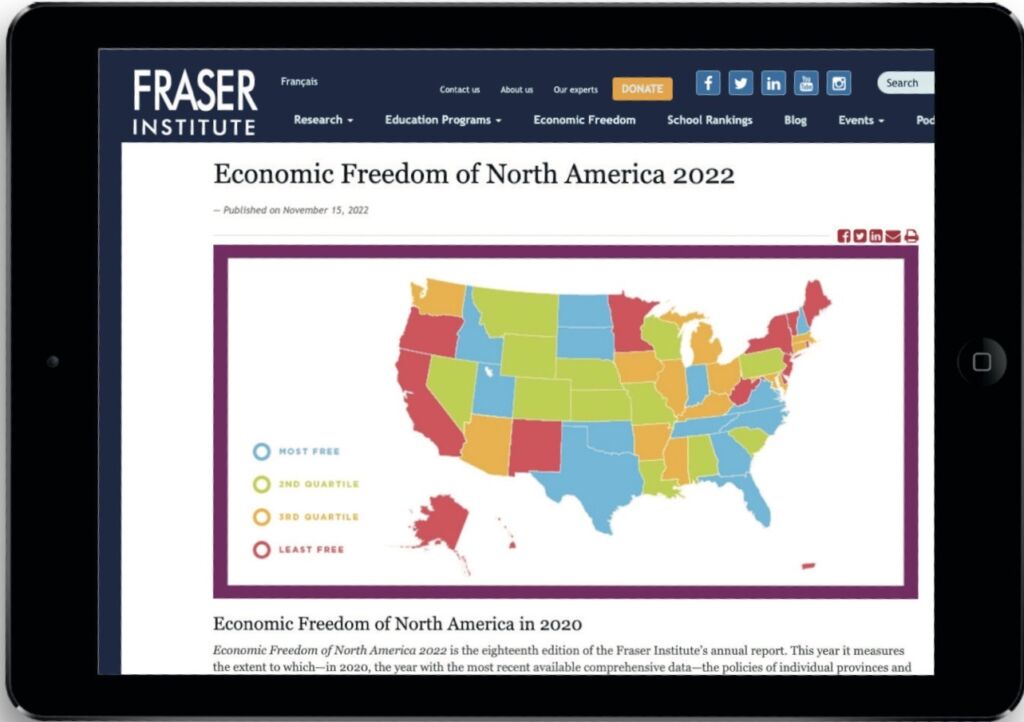Flunking out
Minnesota underperforms in terms of economic freedom.
Just recently, the Fraser Institute released its newest edition of the Economic Freedom of North America Index — a yearly publication that ranks U.S. states and provinces of Mexico and Canada on economic freedom. The index, which focuses on six areas, seeks to measure how different state governments (at the subnational level) and national governments in North America restrict economic freedom.
The areas the report focuses on are as follows:
1. Government spending: The more the government spends as a proportion of income, the less room there is for private choice.
2. Taxes: Taxes are a burden that restrict economically productive activity. Taxes have a negative relationship with economic freedom.
3. Regulation: Stringent regulations — be it in the labor market, credit market, or general business regulations — restrict private choice reducing economic freedom.
4. Legal system and property rights: Secure property rights and a sound legal system are fundamental to protecting economic freedom.
5. Sound money: Stable money provides the basis for productive economic activities, especially long-term planning. Unstable money increases costs of doing business, thereby infringing on economic freedom.
6. Freedom to trade internationally: Limiting international trade limits voluntary exchange, thereby reducing economic freedom.
In the United States, some components of this index, like sound money and international trade, are mainly controlled by the federal government, so state policy has little impact. This also includes other subcomponents of the index like the credit market.
States do, however, have a strong influence on things like spending, taxes, and regulations — factors that significantly affect their respective economic environments.
How Minnesota ranks
The most recent year for which comprehensive data is available for comparison is 2020, the year the Fraser Institute reports on. And according to the report, compared to other North American regions, Minnesota ranked fairly well on economic freedom in 2020, ranking as the 46th freest region out of 92 total subnational regions.

However, in the United States, Minnesota was among the least free states — ranking 39th among the 50 states and Puerto Rico. This is consistent with Minnesota’s historic performance. Between 2000 and 2020, for example, Minnesota has generally scored significantly below average on this freedom index.
In recent years, no serious reforms have been made on the state’s regulatory environment or spending and taxes, which could have improved Minnesota’s standing. In fact, Minnesota performs particularly poorly on taxes, seconded by government spending — both of which have only grown over the years.
Moreover, this is not the first study to rank Minnesota poorly on economic freedom. Last year the Cato Institute ranked Minnesota 38th in the country for personal and economic freedom. And going even further back, in 2009 the Mercatus Center at George Mason University ranked Minnesota 31st for both economic and personal freedom. Minnesota’s performance on economic freedom has only worsened over the years.
Why Minnesotans should be concerned
Economic freedom affects economic growth. High levels of economic growth incentivize productive economic activity, raising income levels and standards of living. As one chart in Fraser’s Economic Freedom Index shows, there is a positive relationship between growth in income per capita and economic freedom. That is, as economic freedom grows in these two areas, income also grows.
Minnesota’s abysmal performance on economic freedom is therefore a big threat to the growth of the state’s economy and our standard of living.